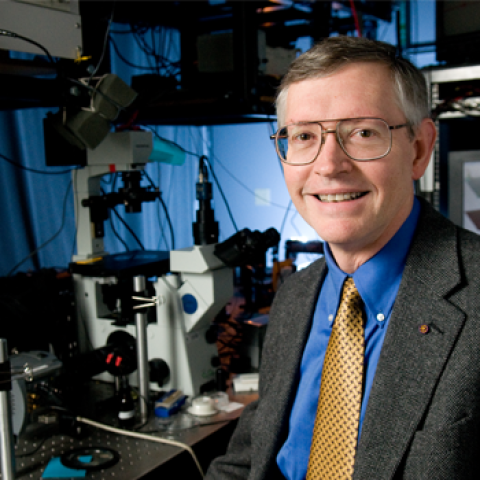Interdisciplinary Initiatives Program Round 1 - 2000
W.E. Moerner, Chemistry
Judith Frydman, Biological Sciences
This project addresses an important biological problem: how do proteins fold, that is, reach their specific, native three-dimensional structures, in the often crowded, bustling environment inside a cell? Molecular chaperones are specialized, barrel-shaped enzymes that accompany the newly-born proteins until they reach their mature structure, and prevent them from taking the “wrong path”.
To do this, some chaperones provide a "folding box" in which troublesome proteins may find the necessary peace, quiet, and space to find the proper shape required for their function. It is not known in detail how molecular chaperones perform their "molecular origami". In this project, we watch what happens inside this “folding-box”, using optical techniques based on the emission of fluorescence from a properly-labeled protein. While part of our measurements are based on measuring many molecules at once, we also utilize a relatively new method called "single-molecule spectroscopy". In this method, lasers, microscopes, and ultrasensitive detectors are used to follow exactly one copy of the molecule of interest at a time. When this is done, we can actually see how each copy of the protein may "march to a different drummer", which provides more information than usual measurements that average over many individuals. This is equivalent to watching just one dancer on a dance floor at a time, rather than averaging over all the dancers present which may not be synchronized. New information on the mechanisms of action of molecular chaperones has been emerging from our studies.



